Italian armored vehicles of the period of the First World War
And the first armored cars in Italy appeared before the war, namely in the 1911 year. These were two (only two!) Armored vehicles (Autobliudata), designed and built on their own initiative by a talented engineer Giustino Cattaneo on the Izotta-Frascini company already known for their cars in Milan. The mass of the armored car was approximately 3 t. Formula chassis 4x2. The rear wheels were twinned, front rims were fitted with additional rims to improve maneuverability, tubeless tires filled with spongy rubber. The maximum speed was about 37 km / h. The armor case even covered the rear wheels, but the thickness of the armor was only 4 mm. Armament: two machine guns - one in a rotating turret, the other had to shoot through the embrasure in the rear hull sheet.
A year later, the single-wheeled armored car Fiat appeared, and at the same time the Bianchi firm offered it its own version of the armored car, again from Milan. Externally, the armored cars "Izotta-Fraschini" and "Bianchi" are very similar, including the rounded hood and tower, and differ only in individual details. The mass of the armored car is also about 3 t. Formula chassis 4x2. The rear wheels are dual. Engine power - 30 HP Reservations up to 6 mm. Armament: two machine guns that had a similar placement, like the “Izotta-Fraschini”. From 1913 to 1916, at least four prototypes of armored vehicles were built at Bianchi, and the 1915 and 1916 variants are strikingly different.
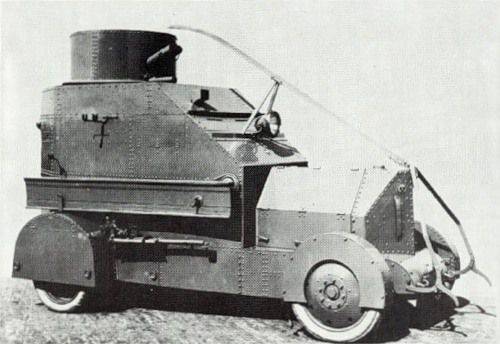
BA "Bianchi" arr. 1915 of the year
But BA “Fiat Terni” (also called “Fiat Leger” or “Tipo Tripoli”) was released in Italy ... at the end of 1918 of the year! And he was named so because it was produced at the metallurgical plant in Terni in Umbria. The design was developed at the Société Terni steel factory and, it must be said, the Italians succeeded in what no one else at that time was able to accomplish, namely, creating an “absolute” BA for its time. They got a simple but durable and reliable car with a reliable chassis and engine from the famous Fiat 15 truck.
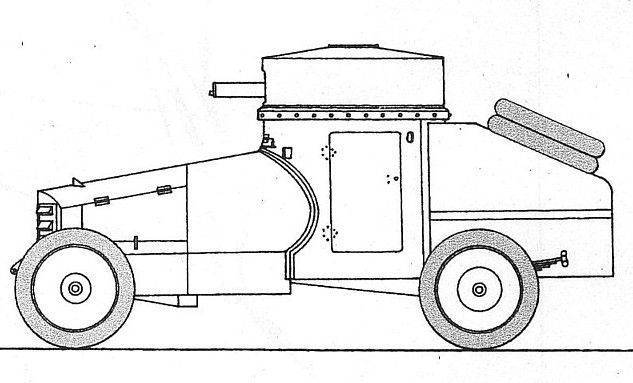
Fiat Terni had a very simple and functional design.
It was a small armored vehicle: 4,54 m long, 1,70 m wide and 3,07 m high, armed with one M1914 Fiat Revelli machine gun with water cooling of 6,5 caliber mm. At least one car was equipped - probably, as an experiment - with a tower from the British BA "Lanchester". But this Italian-British cooperation in this area ended.
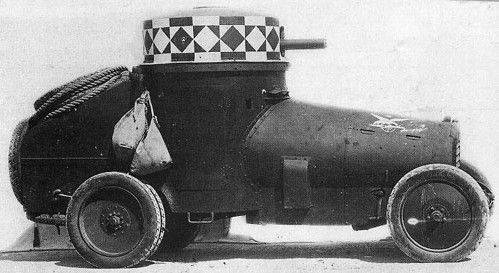
Such a picturesquely painted tower served as an identification
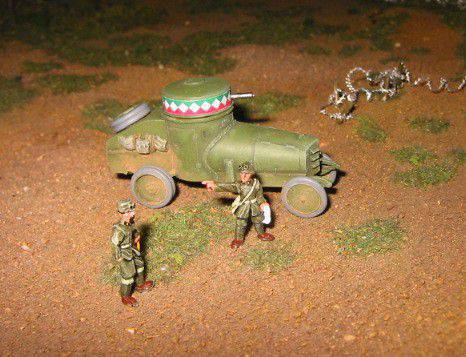
And this is how it was decided in color!
Well, what is its perfection? But in what - the car consisted of only four armor parts of a very simple form: the armor hood over the engine, the cylindrical base of the tower, which was also the driver’s cabin (no one had thought of that!), The tower itself and the "stern module" of very simple outlines . That is, the design of the car was much simpler than that of the British “Lanchester”, and that says a lot.
But he didn’t have to fight in the fields of the “Great War”. 12 armored cars were sent to Libya in 1919 year, where they, along with the "Lancia" IZM fought in the composition of the two units of armored vehicles. They were also used as escort vehicles on supply lines, but also proved to be good scouts, successfully operating in collaboration with aerial reconnaissance. When Italy entered World War II in 1940, around Fiat Terni armored vehicles around 10 were still used in Libya, although some of them went through several upgrades.
[Center]
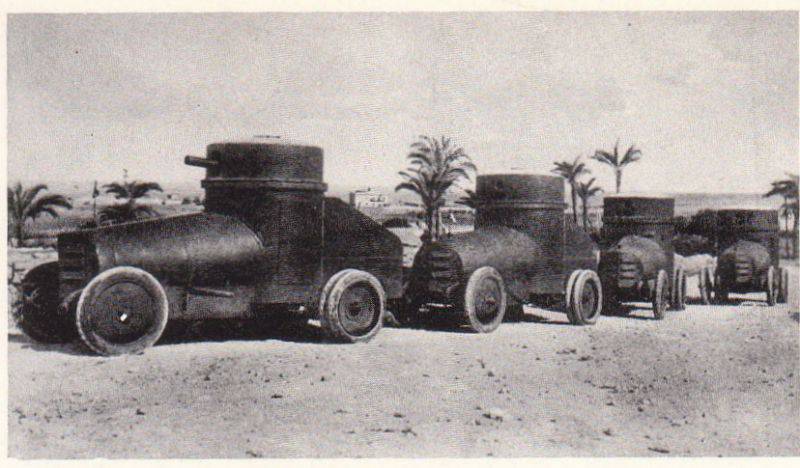
Fiat Terni under the palm trees of Ethiopia
However, the most massive Italian armored car, a kind of "calling card" of the Italian wheeled armored vehicles of the First World War, was BA "Lancia". They were built quite a lot, and they were used against the Austrian and later German troops. Some of them were captured by the Germans and used to equip their own armor, as well as for the preparation and arming of American troops in Italy.
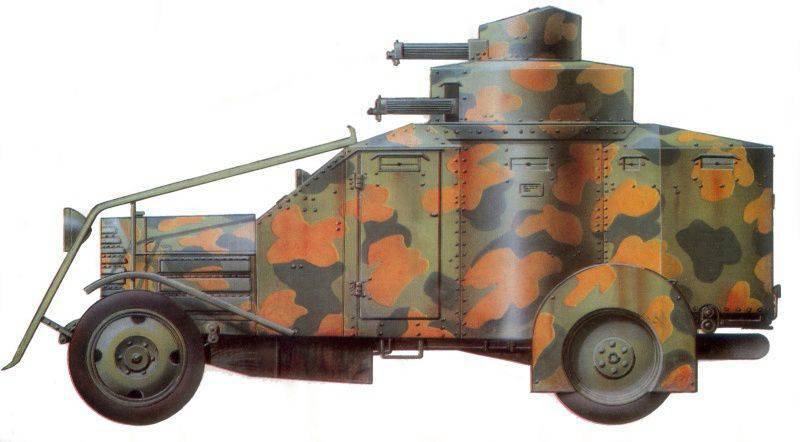
"Lancia" IZ
The Ansaldo company from Turin made it, taking as a basis a light truck on pneumatic tires with a twin rear pair. The car was very well armored. The thickness of the armor plates from chromium-nickel steel at the front reached 12 mm, and along the sides - 8 mm, which not every tank could boast at that time. However, the most unusual in this BA was his two-tier tower. And in the larger, lower tower there were two machine guns at once, and at the top, a small, with independent rotation, one! This gave him the opportunity for a wide maneuver with fire and allowed not only to fire at the same time two different targets, but also to concentrate very strong fire on one! Machine guns were used in two types: the French "Saint-Etienne" caliber 8-mm, which the French supplied to all who are not lazy on the principle of "God forbid that we are worthless," and the actual Italian Fiat-Revelli, arr. 1914 of the year.
Another original feature of this BA was the “rails” for cutting barbed wire, installed above the hood to pass through the wire obstacles stretched across the road. The crew was large enough and consisted of a car commander, driver, three machine gunners and a mechanic.
The car weighed about 3950 kg, including ammunition from 25000 cartridges. Engine power 70 HP made it possible to reach a maximum speed of about 70 km / h. The range was about 500 km. The length of the car was 5,24 m, width 1,9 m, height 2.89 m, wheelbase 3,57 m.
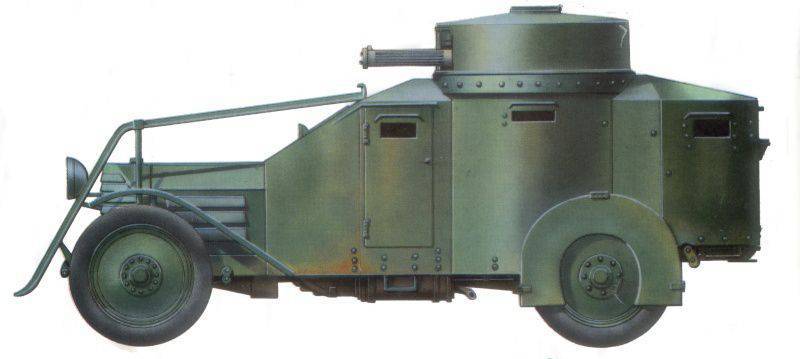
"Lancia" IZM
The IZM model was almost identical to the first model, except that the small turret was eliminated, and the third machine gun was installed in the rear of the hull and was turned back. It is interesting that in place of the upper turret there was a hatch through which from the third machine gun one could even shoot at planes! Both models were used by the Italian army for a long time, both during the Spanish Civil War, and in Ethiopia, and in East Africa during the Second World War.
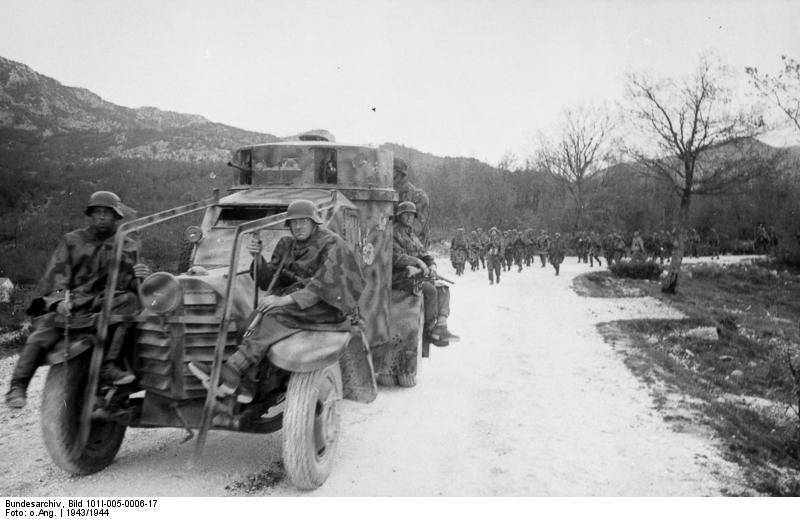
I have always felt a bit sorry for the Germans, although they are invaders: well, on what outright shit they had to fight!
And what about the tanks? With the tanks, the Italians, again, were both lucky and unlucky at the same time. Considering the fact that the Italian army led the main struggle in the high-altitude areas on the border with Austria-Hungary, she was unnecessary tanks. However, in 1916, Captain Luigi Kassali proposed building armored vehicles that could move across rough terrain to cut barbed wire. The machine received two machine-gun turrets and a cutter similar to the French Breton-Preto device. But the project was abandoned after tests proved its practical unsuitability. But the Italians did not despair, but immediately took up the new project, called Fiat 2000. Work began on August 1916, and the first tank was ready in June 1917. (Hence its alternative name "Type 17".)
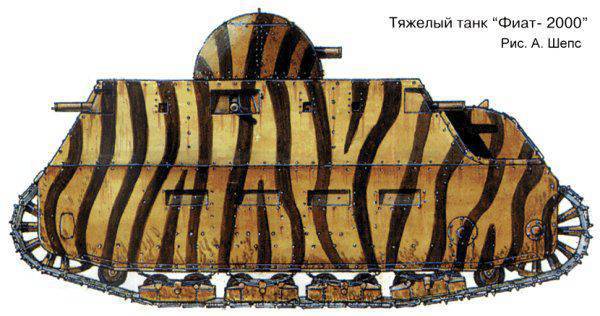
And it was here that it turned out that the Italians succeeded in something that neither the British, nor the French, nor the Germans succeeded in, namely, creating the most sophisticated and well-armed tank of the First World War! Let's start with the fact that it was the first heavy tank with a gun turret, and besides, hemispherical shape. The driver had an excellent overview, and could observe either through the hatch, or through the periscope - the level of caring for the person and unreached on the tanks of the French and British! The engine was placed at the back, which made it less susceptible to damage. The crew had a lot of space inside, since most of the mechanisms were under the floor. It was much more practical and British, and German, and French design.
In addition, the tank was very heavily armed. It had a 65-mm short gun (L / 17), which could fire on the 360 °. At the same time, its trunk had declination and elevation angles from -10 ° to + 75 °. That is, the possibilities for maneuvering fire from this tank were very broad. He carried at least seven 6,5-mm machine guns "Fiat-Revelli" (6 in the embrasures and 1 spare), installed in such a way that each of them had a horizontal angle of fire at 100 °. Three machine guns fired at the stern and on the sides at once, and two were ahead.
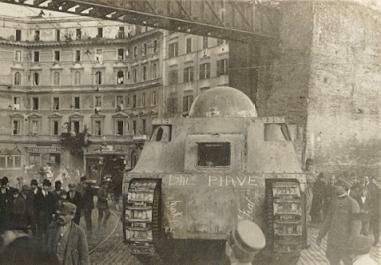
"Fiat 2000" in the city. Clearly visible driver's large hatch
The undercarriage consisted of ten road wheels, eight of which were grouped in pairs. The tank used elliptical leaf springs. The thickness of the armor varied from 15 to 20 mm. True, the tank weighed 40 tons. The power of the Fiat 12-cylinder engine was about 240 horsepower, which allowed it to reach a maximum speed of about 7 km / h, which is quite good compared to other tanks of that time. True, the fuel supply was only enough for 75 km on the highway. He easily overcame obstacles and, thanks to wide tracks, had good maneuverability on soft soils. The length was 7,378 m, width - 3.092 m, height - 3,785 m. The tank overcame slopes of 35 ° - 40 °, ditches 3 - 3,5 m wide. Ford and vertical obstacles up to 1 m.
Until the end of the war in 1918, only two such tanks were made, but it is unclear whether they were ever used in combat.
In Libya, it was found that the average speed of the tank is only 4 km / h, so soon they were abandoned. One of them stayed in Libya, and the other returned in the spring of 1919, to Italy, where it was shown to the public in the presence of the king in the Roman stadium. The tank showed a whole series of tricks: it drove into the 1,1-meter wall, then broke through the wall 3,5 m in height, moved the 3 meter-wide trench and threw several trees. However, this impressive presentation did not arouse the interest of the public, and soon this tank was forgotten. In the 1934, he again participated in the parade, for which he was redrawn and even re-armed: two front machine guns were replaced with 37-mm L / 40 guns. Later it was installed in Bologna as a monument, but its further fate, as well as the fate of the tank turned out to be in Libya, is unknown.
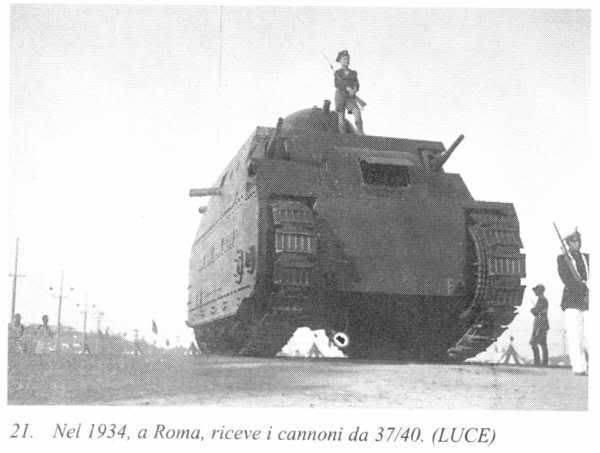
Fiat 2000 with 37-mm guns
In 1918, France supplied Italy with one Schneider and several light Renault FT-17. The Italians made an additional order for the last car, but at that time France barely provided its own army with tanks and could not satisfy the Italians' request. For this reason, they decided to build their own tank, similar to the "Renault" FT-17, but using components and parts of domestic production. The tank was developed by Ansaldo and Breda, and an order for the production of 1400 machines was placed on Fiat. However, due to the end of World War I in 1918, the order was reduced to 100 units. And again, it turned out that the Italian tank "Fiat 3000" turned out in all respects perfect French. It was smaller and lighter with the same booking. The engine on it stood across the hull, and the weapons were more powerful, especially the cannon - the same 37-mm gun, like the French, but with more muzzle energy. But the time of such tanks soon passed, and the Italians were left only to state that they were late for distributing prizes for the best tanks of the First World War!
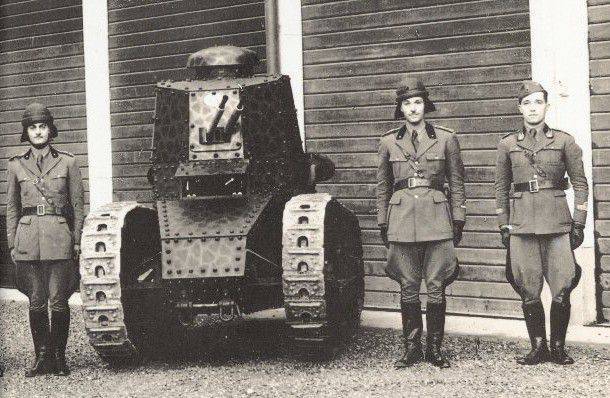
"Fiat 3000" and next to him brave Italian tank crews
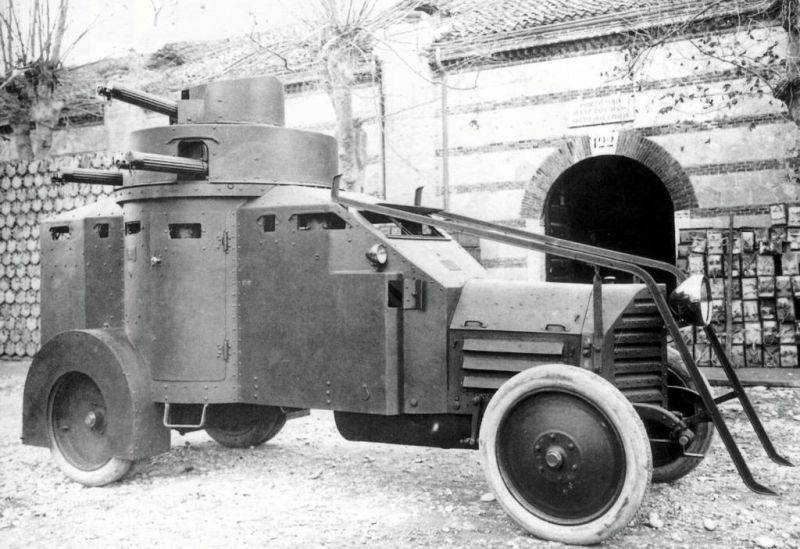
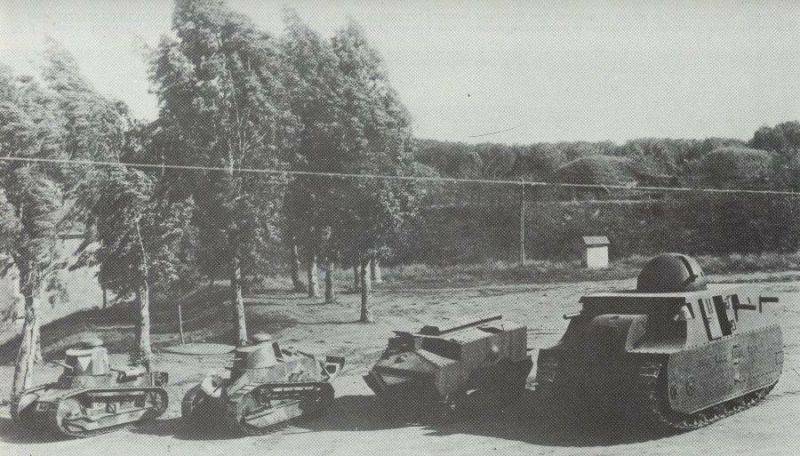
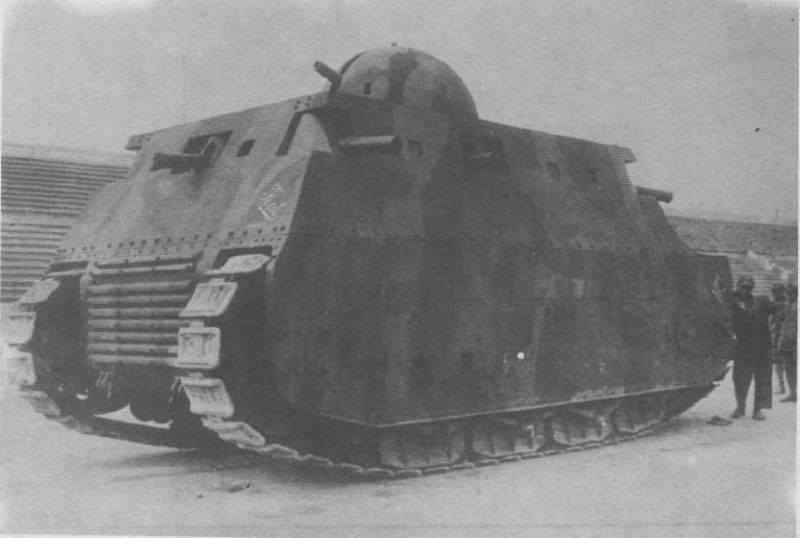
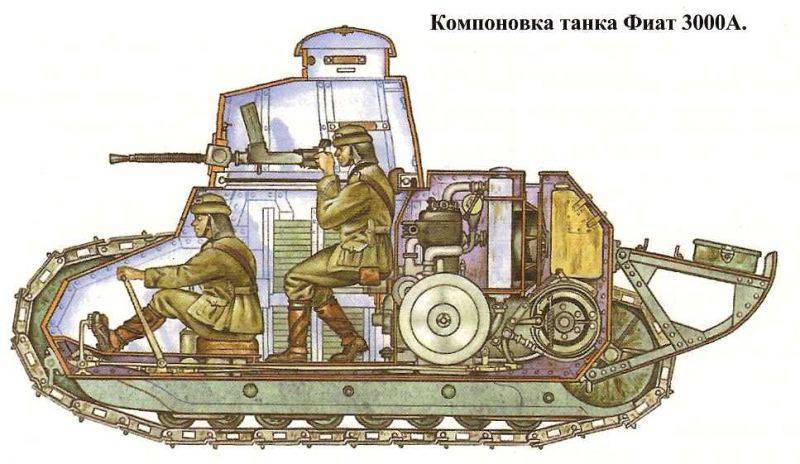
Information